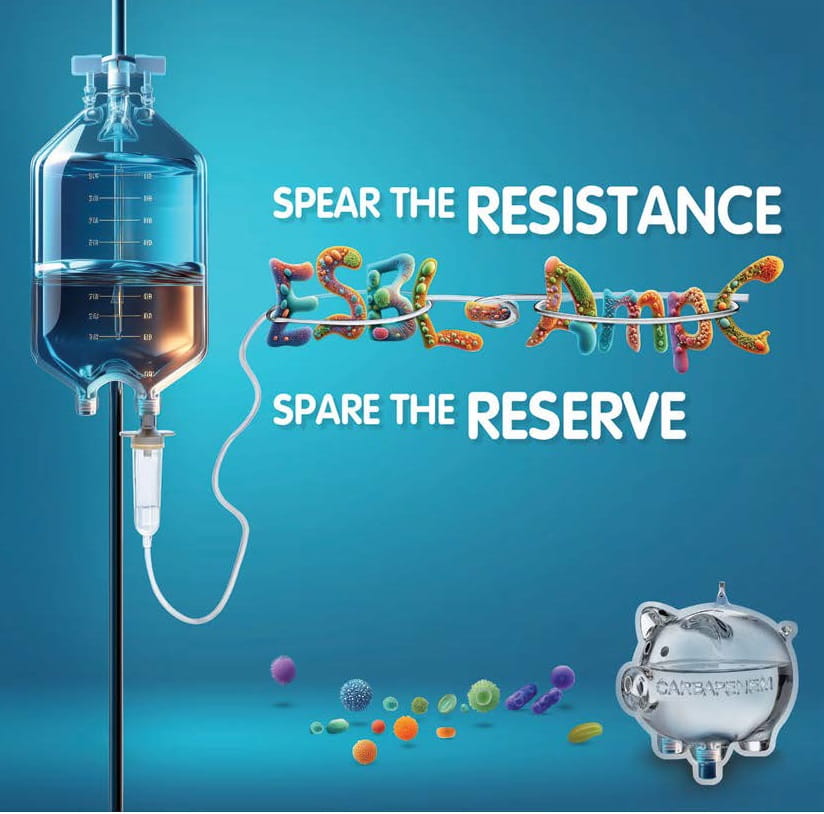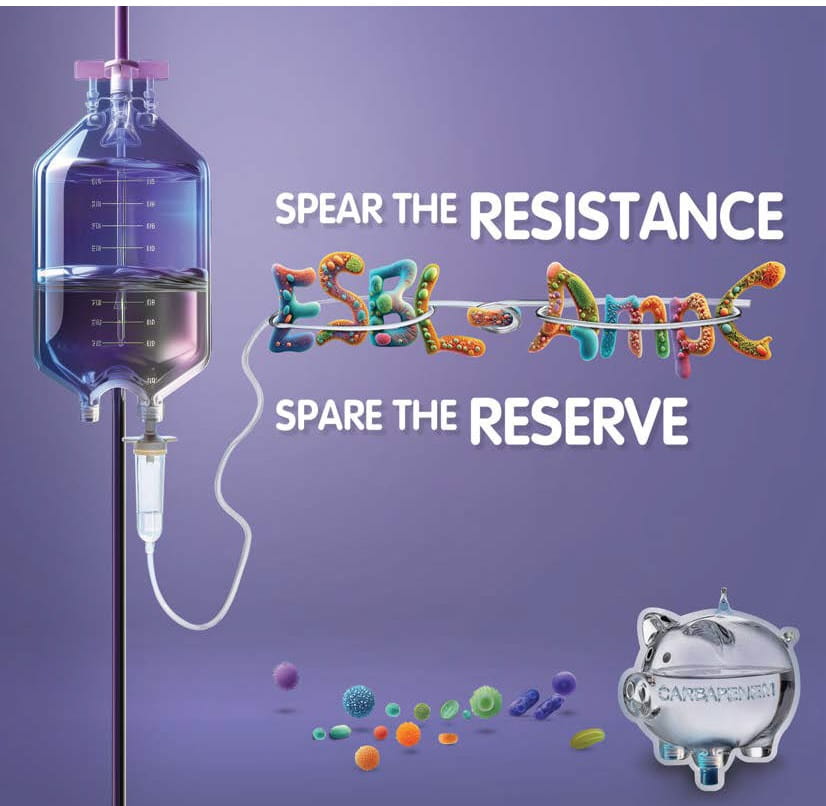Dr Rippa from University Hospital in Southampton presented a study on the role of ureteroscopy in managing recurrent urinary tract infections (UTIs) over ten years. They analyzed 178 patients who underwent flexible ureteroscopy for stone treatment and found that the overall stone-free rate at follow-up was 90%, whereas the infection-free rate was initially 88.8% and decreased to 65% at 24 months. They concluded that the presence of residual stones was correlated with a higher chance of UTI, and the stone-free rate after ureteroscopy could be a significant predictor of infection-free status at follow-up in patients with recurrent UTIs.
The session discussed the antibiotic prophylaxis for transrectal ultrasound guided prostate biopsy. Pre-intervention antibiotic prophylaxis was analyzed between 2019-2020 with the primary end point being clinical diagnosis of infectious complications within 4 weeks of biopsy. The study groups received either ciprofloxacin, fosfomycin or trimethoprim/sulfamethioxazole. The study demonstrated that the switch from ciprofloxacin to fosfomycin alone was associated with significant increase of the post-interventional infection rate. The combination of fosfomycin and trimethoprim/sulfamethioxazole had comparable infection rate to ciprofloxacin.
The presentation was about a planned, randomized, multicenter non-inferiority study of antibiotic prophylaxis of fosfomycin versus ciprofloxacin in transrectal prostate biopsy. The study included 3,448 men, and the endpoint was hospitalization within two weeks due to febrile UTI (00:07:20). Patients were divided into low and high-risk infection groups and received different antibiotics. The results showed that phosphomycin might not be the best option for antibiotic prophylaxis in transrectal prostate biopsy if the patient has previously presented with a history of CS in cultures.
The session presented a prospective trial comparing cefixime and fosfomycin - as prophylaxis for transrectal prostate biopsy. Infection was defined as fever, diagnosis by a healthcare professional or antibiotic prescription within four weeks. The results showed no significant difference between the two groups, with a total rate of 8% for urinary tract infections and no hospitalizations reported. The study concluded that both alternatives are safe and associated with low rates of post-biopsy UTIs, but further research with larger samples is needed.
The study assessed the treatment satisfaction of bladder irrigation with tap water to reduce antibiotic treatment for catheter-associated urinary tract infections. Bladder irrigation included actively injecting/aspirating 50ml water. It was observed that both neurogenic and non-neurogenic patients were satisfied with bladder irrigation and majority of patients experienced improvement in their condition.
The study evaluated the outcomes of patients with recurrent UTIs treated with intravesical acid hyaluronic acid or chondroitin sulfate. Thirty-three women were enrolled, and installations were performed once weekly for four weeks and then once monthly for six months. The results showed a progressive reduction in urinary frequency, urgency, and cine episodes and an increase in the vast value. About 85% of patients had no recurrent UTI at six months follow-ups. The study concluded that intravesical installations are a safe and effective treatment for patients with recurrent UTIs.
Phillip Lopez from Portugal presents the results of a prospective study on preventing recurrent urinary tract infections using MV140 immunoprophylaxis, a sublingual vaccine. The study involved 42 patients with a mean age of 55 years who had experienced means of 5 UTI episodes in the 12 months before the treatment. After 12 months of MV140 treatment, 38% of patients were UTI-free, and 33% reported a reduction in the number of UTI episodes, with a mean of 1.8 episodes. Most patients also reported a reduction in symptom severity, and the treatment was well-tolerated, with mild side effects reported in only five patients. Overall, MV140 was effective and safe for preventing UTIs in patients with recurrent UTIs.
Li Ya from West China Hospital presented on antibiotic prophylaxis in neurological practice and provided an evidence map of its effectiveness and necessity. The umbrella review assessed 14 clinical scenarios in urology with 22 outcomes and found that antibiotic prophylaxis was effective in half of the cases but was supported with consistent evidence only in the percutaneous nephrostomy, and TURP. The review also identified evidence gaps in these areas and noted the use of other measures like UIN or bladder irrigation to prevent UTIs. Li Ya looked forward to hearing more from Doctor Alvares about her latest research on urodynamics, which yielded opposite results to their current evidence.
A study evaluated the effectiveness of antibiotic prophylaxis versus no prophylaxis in preventing infections in patients undergoing urodynamic studies. The study found no significant difference between patients who received prophylaxis and those who did not. However, patients with certain urodynamic features, such as lower urinary tract obstruction, showed a higher incidence of infection and may benefit from prophylaxis. Therefore, the recommendation of the guidelines not routinely giving prophylaxis should be followed, but further studies are needed to confirm these findings.
A study presented identifying factors for developing sepsis and septic shock post-decompression using a SOFA score. The study compared patient data from PCN and retrograde standing and found no significant difference in the change of SOFA score. A logistic regression model was used to identify independent practice related to urosepsis, and cardiovascular SOFA was a protective factor. A longer hospital stay in patients with PCN was due to additional interventions like antegrade stenting and PCN removal after stenting. In conclusion, despite a marginally higher risk of failure, RUS should be considered in patients with lower procedural risk.
A study evaluated the predictive ability of elevated fragment 1+2 predicts severe acute kidney injury (AKI) in patients with urological sepsis. In the study group 43% had higher F1+2 and 26% developed severe AKI. The study concluded that elevated prothrombin F1+2 can predict severe AKI in patients with urological sepsis.
The study compares the new T-Control catheter with a conventional Foley-type catheter to analyze the in vitro biofilm formation after three and five days. The T-Control catheter has a three-position bar that controls urine flow. In the study, a suspension of bacteria was injected through the distal part of the catheter, and biofilm formation was assessed using visualization and cell counting. The results showed that the conventional catheter had biofilm formation at 48 hours, while the T-Control catheter did not show any biofilm at any measurement point. Therefore, the T-control catheter effectively reduces bacteria and biofilm formation through its fluid control system.
This session discusses a retrospective study on an outbreak of carbapenemase (C) producing enterobacteriales detected at a hospital in Portugal, which affected 30% of patients who underwent radical cystectomy in 2022. The prevalence of infections and colonization by Klebsiella pneumoniae (KP) was much higher in 2022 compared to the previous four years. In addition, patients who did not undergo radical cystectomy had a significantly higher prevalence of KPC producing Klebsiella pneumoniae infection. The overall complication rate was highest among patients with KPC-producing KP infection, but there were no statistical differences in mortality rates between infected and non-infected patients. There was no evidence that this group of patients had a higher mortality rate or more complications with statistical significance.
In this session, Alex from Kings College presented a case series of urological presentations in Monkeypox pandemic. Of the 200 confirmed cases presenting to local health services, 10% of patients required inpatient admission and almost half of the cohort presented with urological or genital lesions. The most common symptom was penile lesions present in all cases; there were also cases of paraphimosis, reduced urine output, penile oedema and coalescing lesions. The ulcers could become necrotic, but GTN patches were effective in halting and reversing the progression of necrosis. The main takeaway is that monkeypox in this outbreak is typically mild. However, patients with reduced immune function are vulnerable to developing penal ulcers that can lead to superimposed bacterial infections and necrosis.
In this presentation, Dr Matthew Davis from Henry Ford Hospital in Detroit analyzed VAERS database from December 2020 to April 2022 to conduct a disproportionality analysis of potential adverse events following COVID-19 immunizations. The main conclusion was that no adverse event produced a positive signal across all four measures. Urologic adverse events remained rare following COVID-19 immunizations and did not produce a positive signal across all four measures. Stratification by manufacturer produced positive signals for potential urologic adverse events following the Janssen immunisation.
European Association of Urology (EAU) Annual Congress 2023, 10th March - 13th March 2023, Milan, Italy




